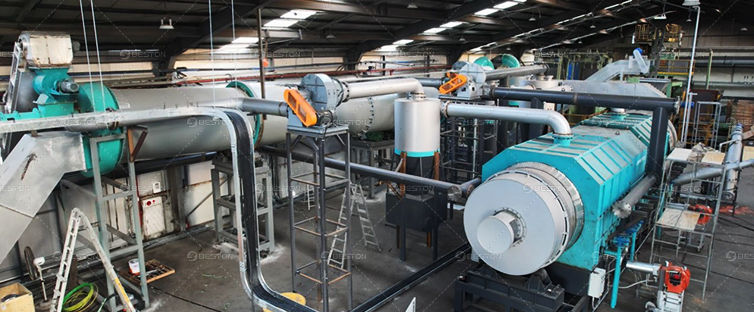The Market for Palm Pyrolysis Projects in Indonesia
- arbourz
- Oct 16
- 4 min read
Indonesia, as one of the world’s largest producers of palm oil, is uniquely positioned to leverage its agricultural by-products for sustainable energy solutions. Palm pyrolysis, a process that converts palm waste into valuable products such as biochar, bio-oil, and syngas, is increasingly seen as a viable technology to mitigate the environmental impact of palm oil production. This growing interest in pyrolysis of palm waste is part of Indonesia’s broader strategy to address waste management issues while contributing to its climate goals.
Regulatory and Market Drivers
The Indonesian government has been under pressure to tackle the environmental challenges linked to the palm oil industry, especially deforestation and the excessive accumulation of agricultural waste. The country’s palm oil plantations generate vast amounts of biomass, primarily in the form of empty fruit bunches (EFB), palm kernel shells, and fronds. These materials, often discarded or burned, pose significant environmental hazards.
In response, Indonesia’s policy landscape has increasingly embraced waste-to-energy technologies, including charcoal making machine, as part of its renewable energy expansion strategy. The 2025 Renewable Energy Roadmap outlines the goal of achieving 23% of total energy consumption from renewable sources, including biomass and waste-to-energy technologies. Additionally, Indonesia has committed to reducing greenhouse gas emissions by 29% by 2030, with an emphasis on carbon-neutral technologies such as pyrolysis.

Pyrolysis of Palm Waste: A Sustainable Solution
The pyrolysis of palm waste offers a compelling solution to several of Indonesia’s environmental and energy challenges. By thermally decomposing organic material in the absence of oxygen, pyrolysis transforms palm waste into high-value products. These include biochar, a stable form of carbon that can be used to improve soil health, reduce carbon emissions, and provide an alternative to chemical fertilizers. Bio-oil can be further refined into renewable fuels, while syngas can be utilized for power generation or as a feedstock for industrial processes.
Palm kernel shell charcoal machine has gained significant traction in Indonesia, where local businesses and international investors are increasingly viewing it as an economically viable alternative to traditional palm waste management methods. Unlike incineration, which releases harmful pollutants into the air, pyrolysis captures the energy contained within the waste, providing both environmental and economic benefits. Additionally, it helps mitigate the issues of open burning and air pollution that often arise from traditional waste disposal methods.
Challenges in Scaling Palm Pyrolysis
Despite its potential, the widespread adoption of palm pyrolysis in Indonesia faces several obstacles. One of the main challenges is the initial investment required for setting up pyrolysis plants, which can be relatively high. This is particularly problematic for small and medium-sized palm oil producers who may lack the financial resources to invest in advanced waste-to-energy technology.
Another issue is the logistical challenge of collecting and transporting palm waste to pyrolysis facilities. Although palm plantations generate large volumes of waste, the infrastructure for efficient collection and transportation is still underdeveloped in some areas. The scattered nature of palm oil plantations, especially in remote regions of Indonesia, makes it difficult to establish a centralized collection system that would feed pyrolysis plants.
Furthermore, there is a need for regulatory clarity on the classification of products derived from palm pyrolysis. The Indonesian government has yet to set clear guidelines on how to classify and market the biochar and bio-oil produced from palm pyrolysis, which could limit their commercial viability. Without a standardized regulatory framework, it is difficult for businesses to scale pyrolysis operations and secure market access for their products.
Market Potential and Economic Viability
The potential market for palm pyrolysis in Indonesia is significant. As one of the largest palm oil producers in the world, Indonesia generates millions of tons of palm waste annually. If effectively managed through pyrolysis, this waste could be converted into valuable by-products that can be sold domestically or internationally. The global demand for biochar, bio-oil, and syngas is growing, driven by their applications in agriculture, renewable energy, and industrial processes.
Biochar, for example, has a growing market in the agricultural sector as a soil amendment, particularly in regions where soil fertility is a concern. Indonesia’s agriculture sector, which accounts for a large portion of the country’s GDP, could benefit significantly from the widespread use of biochar. Similarly, bio-oil can be refined into renewable diesel or other fuels, providing a sustainable alternative to petroleum products.
The Indonesian government has also created financial incentives for businesses that adopt renewable energy technologies, including pyrolysis, through grants, subsidies, and tax incentives. These measures are designed to reduce the financial burden of adopting green technologies and stimulate private sector investment in sustainable waste management solutions.
Future Outlook for Palm Pyrolysis in Indonesia
The future of palm pyrolysis in Indonesia looks promising, as both environmental and economic factors align to create a favorable market environment. The country’s commitment to renewable energy, coupled with the increasing pressure on palm oil producers to adopt more sustainable practices, will likely drive further investment in pyrolysis technology.
Furthermore, advancements in pyrolysis technology, such as improved efficiency, lower operational costs, and better waste logistics, will help overcome some of the current barriers. As the Indonesian government strengthens its support for renewable energy initiatives, the role of palm pyrolysis in the country’s energy mix will become increasingly significant.
In conclusion, while challenges remain, the market for palm pyrolysis projects in Indonesia is set to grow. With the right regulatory frameworks, technological advancements, and financial incentives, palm pyrolysis could become a cornerstone of Indonesia’s sustainable development strategy, offering a solution to both waste management and renewable energy production.









Comments